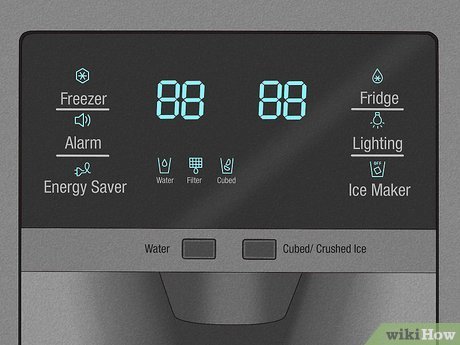
The E3 error code on a Samsung refrigerator typically indicates a malfunction with the refrigerator’s defrosting system. Think of it like a sudden traffic jam on what was your smooth-running freeway of coolness. Without proper defrosting, your fridge’s cooling capabilities might get compromised, causing the internal temperature to rise – and we all know that’s not ideal for the fresh produce and other perishables sitting in your fridge. So, what do you do when you see this error flashing at you? Let’s dive in to understand it better and get your fridge back to doing what it does best, keeping your food cool and fresh.
Understanding the E3 Error Code
When you see an E3 error code, it’s a call for help from your refrigerator. This code is an indication that the defrost heater is facing an issue. Imagine the defrost heater as a small team of hardworking employees whose job is to prevent frost buildup. If this team stops working, frost accumulates, blocking airflow and reducing the fridge’s efficiency much like a clogged air filter in your car would.
Here’s the deal: the defrost system in your fridge includes a few components, such as the defrost heater, defrost sensor, and defrost thermostat. When any of these components fail, the circulation of cold air is hindered. This can lead to irregular temperatures inside your fridge, creating a less-than-ideal environment for your stored goods. A malfunctioning defrost system also results in increased energy consumption because your fridge will work overtime to maintain its cool.
Now, let’s explore what might cause these components to fail. Often, the culprit is either wear and tear or a sudden power surge. Over time, wires can degrade, sensors can become faulty, or the heater can burn out. Power surges, which are not uncommon in households, can also damage these sensitive components. Knowing this helps us to understand why these issues may arise and how to address them effectively.
Steps to Reset Your Samsung Refrigerator
Resetting your Samsung refrigerator after encountering an E3 error code is akin to giving it a gentle nudge to say, “Hey, let’s get back on track.” But how exactly do you perform this reset? First, it’s crucial to ensure your safety. Always unplug the refrigerator from the power source before you start tinkering around. It’s like ensuring the power is off before changing a lightbulb.
Once unplugged, leave your refrigerator off for about 10 to 15 minutes. This waiting period acts like a mini vacation for your fridge’s internal systems, allowing them to recalibrate. During this time, you can inspect the back of the fridge where the defrost components are located. If you’re feeling brave and tech-savvy, you can check the defrost heater and thermostat for any visible signs of damage, like burnt marks or disconnected wires. However, if this feels too daunting, it’s always a good idea to call in a professional technician.
After the waiting period, plug your refrigerator back in. Watch for the error code to see if it reappears. If the E3 code returns, there might be an underlying mechanical issue that a reset alone can’t fix. In such cases, consider consulting with a repair service to thoroughly inspect and replace any faulty parts to prevent further complications.
Preventive Measures for Future Peace of Mind
Now that you’ve dealt with the E3 error code, you might be thinking about how to avoid this hassle in the future. Just as regular car maintenance can prevent breakdowns, a little attention here and there can ensure your fridge remains in tip-top condition. Regularly cleaning the condenser coils can help maintain efficient airflow, much like clearing the dust off a fan to keep it spinning at full speed.
Another helpful tip is to keep an eye on your fridge’s location. Ensure it has ample space for ventilation and isn’t cramped against a wall, allowing it to “breathe” easier. Think of your refrigerator like an athlete; it needs good airflow to perform at its best. Also, be cautious during power outages or storms. Using a surge protector can safeguard your appliance from unexpected power spikes.
Lastly, it’s wise to schedule annual maintenance checks with a professional. Think of it like a wellness visit for your refrigerator. Regular checks can help identify potential issues before they become problems that lead to dreaded error codes. With these steps, you’ll not only help your fridge stay cool but also save on energy bills and prolong the life of your appliance.
In conclusion, while error codes like E3 might initially seem daunting, understanding and addressing them isn’t as complicated as it first appears. With a little patience and the right approach, you can resolve the issue, maintain your refrigerator’s performance, and keep your kitchen running smoothly.